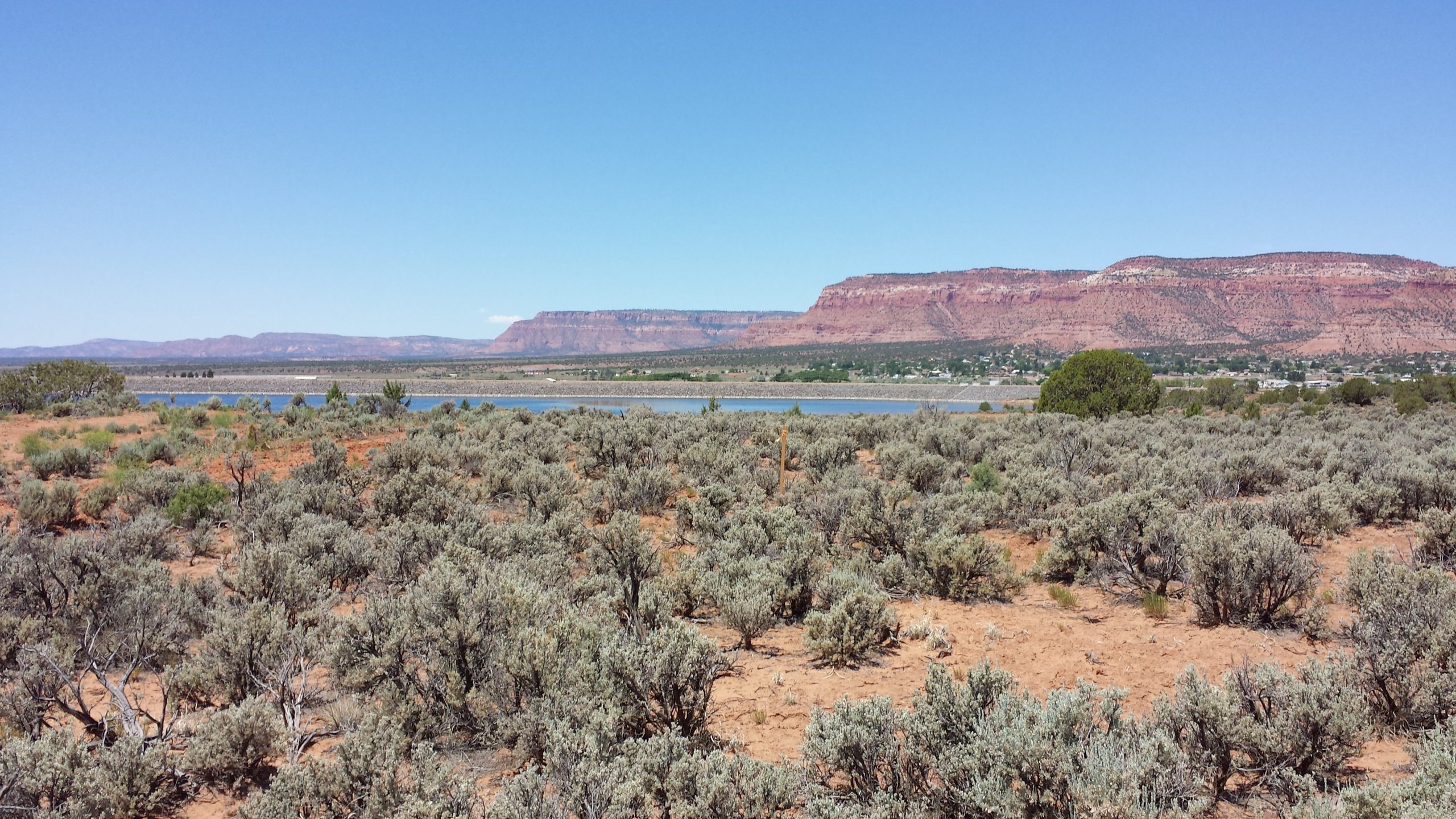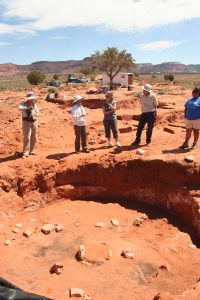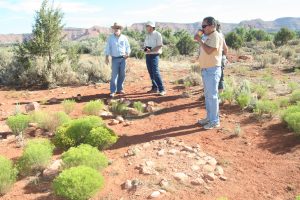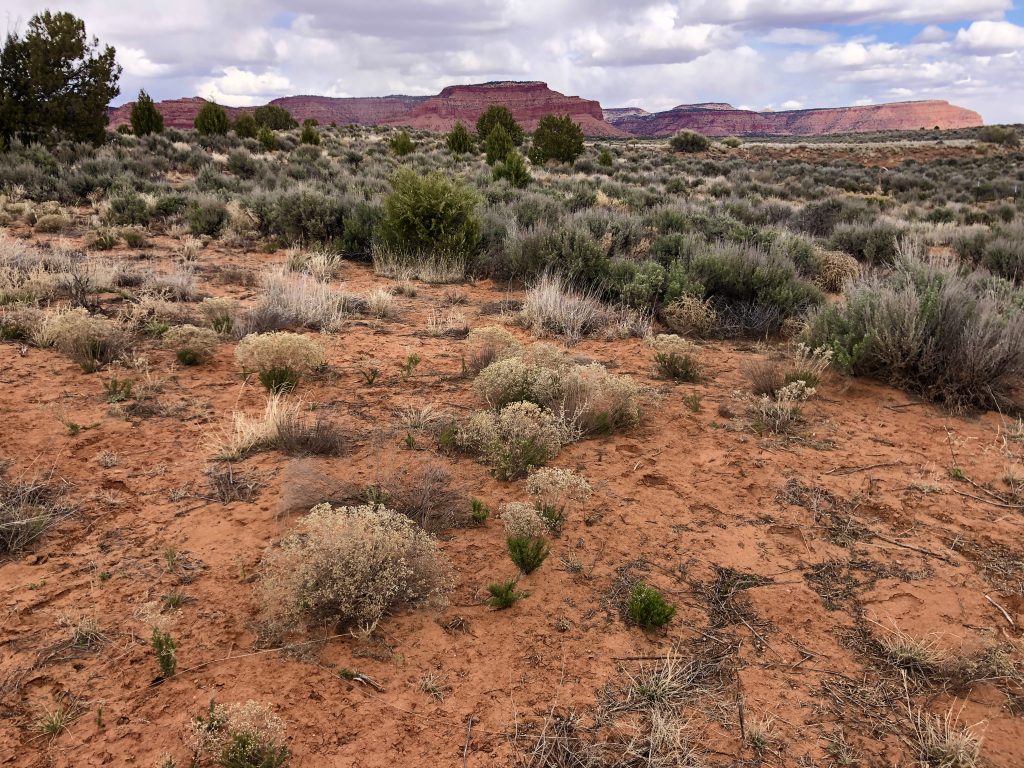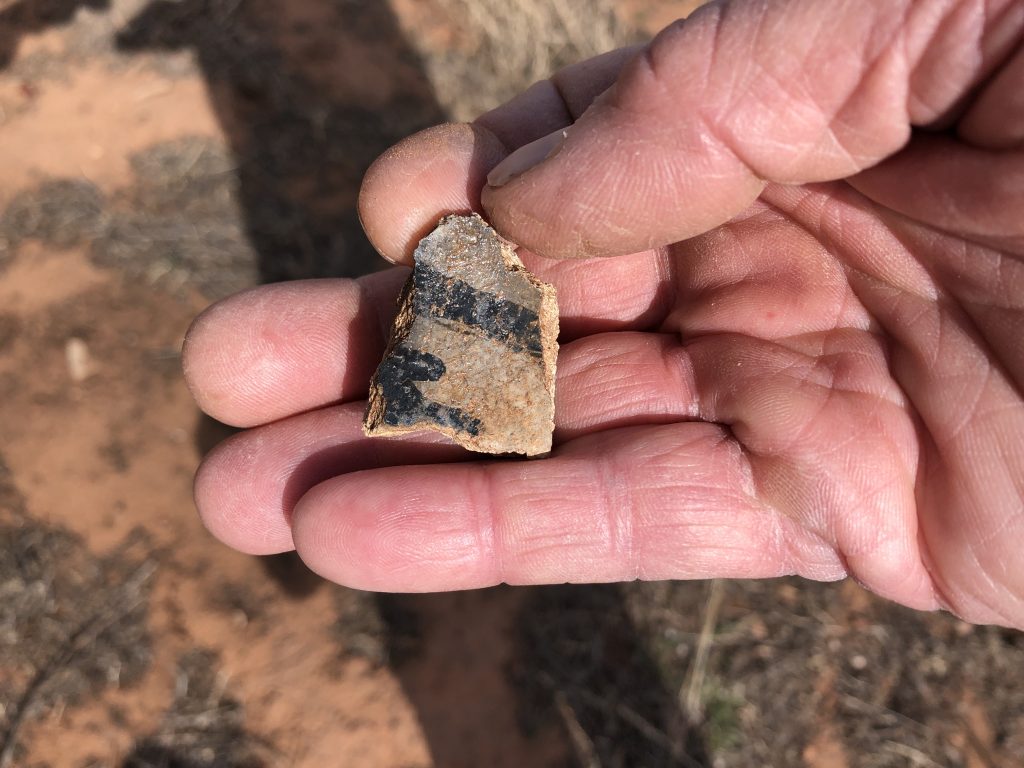Jackson Flat Reservoir was constructed to store irrigation water for Kane County Water Conservancy users. Before the reservoir was built, archaeologists from HRA Inc. and other organizations excavated 10 prehistoric sites in the construction area, some of which were occupied by a group of the Anasazi called the Virgin Branch. The portions of the sites that were under the dam footprint and below the water line were completely excavated.
The Archaeological Conservancy worked with the Kane County Water Conservancy, the Army Corps of Engineers, the State of Utah School and Institutional Trust Lands Administration, and the Kaibab Band of Paiutes to protect two of the sites located above the reservoir’s water line. These sites will become permanent archaeological preserves owned by The Archaeological Conservancy.
The Conservancy’s sites have not been investigated, but it’s assumed that in some way they resemble the excavated sites. These were camps and villages that dated from the Archaic period about 6,000 years ago through what’s known in this region as the Post Puebloan period, which ended when the first Euro-Americans arrived in Kanab in 1776. Over the course of three years, the archaeological teams excavated more than 60 major pithouse and storage features and hundreds of small hearths, refuse deposits, and pits.

